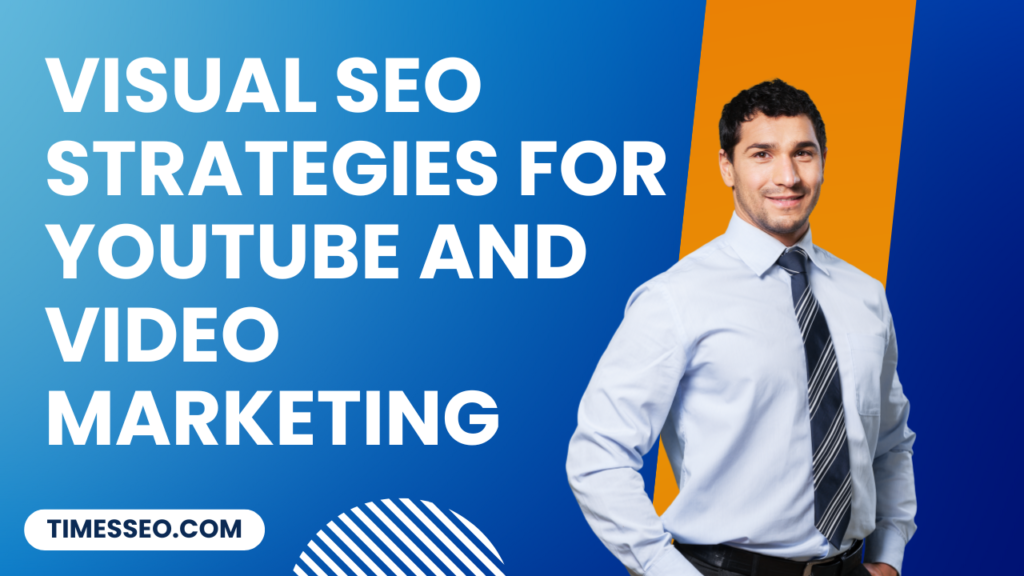
Visual SEO Strategies for YouTube and Video Marketing
Discover effective visual SEO strategies to boost your YouTube rankings and video marketing success. Discover how to improve exposure and engagement by optimizing titles, thumbnails, descriptions, and other elements.
Table of Contents
Introduction
Today, video marketing is the foundation of digital strategy, not just a fad. With platforms like YouTube and TikTok dominating online consumption, businesses can’t afford to overlook visual SEO strategies. Optimizing videos ensures they don’t just exist online but also rank, attract views, and convert audiences.
Understanding Visual SEO
So, what exactly is visual SEO? Simply put, it’s the process of making video content discoverable in search engines and video platforms. Search engines like Google, and even YouTube itself, rely on keywords, metadata, and user engagement to rank videos. Without optimization, your video risks getting lost in the endless sea of content.
The Power of Video in Marketing
Did you know that, after Google, YouTube is the second-biggest search engine? Millions of users search for tutorials, reviews, and entertainment daily. This makes videos a direct gateway to visibility and conversions. Video content also improves engagement—viewers are more likely to retain and act upon video messages than text-based ones.
Why YouTube SEO Is Different
Unlike blog posts or web pages, YouTube SEO depends heavily on factors like watch time, audience retention, and engagement (likes, comments, shares). In other words, the algorithm rewards videos that keep people watching. That’s why content quality is just as important as keyword placement.
Keyword Research for Video Content
To start, you’ll need the right keywords. Tools like TubeBuddy, VidIQ, or even YouTube’s autocomplete feature can help you discover what your audience is searching for. The goal is to target keywords that match user intent while having achievable competition levels.
Optimizing Video Titles
Think of your title as a billboard—it has to be eye-catching but also keyword-rich. A good title blends SEO with curiosity. For example: instead of “SEO Tips,” try “10 Visual SEO Strategies to Boost YouTube Rankings Fast.”
Creating Engaging Thumbnails
Your thumbnail acts as a first impression. Your click-through rate (CTR) will suffer with a boring thumbnail, even if your headline is excellent. Use bold colors, readable fonts, and faces (when possible) to draw attention. Keep in mind that the title and thumbnail must complement one another to pique interest.
Video Descriptions and Tags
You may use your video description to carefully position keywords, provide context, and explain the material. The first two lines matter most, as they’re visible without clicking “Show More.” Tags, though less influential than before, still help categorize your video and improve discoverability.
Using Transcriptions and Closed Captions
Captions aren’t just for accessibility—they’re SEO gold. Search engines crawl text, not video. Adding transcripts makes your content readable to algorithms and opens the door to international viewers.
Video Length and Watch Time Optimization
Longer videos aren’t always better, but they tend to perform well when packed with value. Aim for content long enough to cover the topic thoroughly but engaging enough to maintain retention. To keep people interested, use hooks in the first ten seconds.
Playlists and Channel Organization
Consider playlists to be your channel’s SEO clusters. By grouping related videos, you create a pathway that keeps users binge-watching. This boosts session duration, which YouTube loves.
Leveraging YouTube Analytics
Your analytics dashboard has a wealth of information. Pay close attention to audience retention graphs, click-through rates, and traffic sources. If viewers drop off at a certain point, tweak your editing style or script to improve engagement.
Embedding Videos on Websites
Embedding YouTube videos on blogs or landing pages helps drive additional traffic and improves SEO. Search engines recognize when content is linked across platforms, signaling authority and relevance.
Promoting Videos Beyond YouTube
Don’t just rely on YouTube. Share your videos on social media platforms, embed them in email campaigns, and repurpose them into short clips for TikTok or Instagram Reels. The more distribution, the higher the chances of visibility.
Future Trends in Visual SEO
The future is exciting—AI tools are already analyzing video content to suggest keywords and improve rankings. Add voice search integration, and you’ll see why optimizing videos for conversational queries is becoming crucial.
Conclusion
Videos are no longer optional—they’re the heartbeat of modern marketing. By implementing strong visual SEO strategies, businesses can maximize reach, boost rankings, and drive conversions. The secret isn’t just making videos—it’s making videos that are discoverable.
Frequently Asked Questions
YouTube SEO focuses more on engagement signals like watch time and retention, while Google SEO prioritizes backlinks and on-page optimization.
Yes! A high CTR from compelling thumbnails signals to YouTube that your content is worth promoting.
Not always. Quality beats length. The goal is to keep viewers engaged, not bored.
Absolutely. Captions provide searchable text for algorithms and make videos more accessible.
Backlinks pointing to your video or channel strengthen authority and improve rankings in both Google and YouTube search.
Table of Contents
Popular Posts
-
 Affordable Technical SEO Audit for Small Business: A Complete Guide26 Jun 2025 Blog
Affordable Technical SEO Audit for Small Business: A Complete Guide26 Jun 2025 Blog -
 How to Get an Affordable Technical SEO Audit for Small Business27 Jun 2025 Blog
How to Get an Affordable Technical SEO Audit for Small Business27 Jun 2025 Blog -
 The Ultimate Local SEO Audit Checklist for Startups28 Jun 2025 Blog
The Ultimate Local SEO Audit Checklist for Startups28 Jun 2025 Blog -
 Local SEO Audit Checklist for Startups: A Beginner’s Guide28 Jun 2025 Blog
Local SEO Audit Checklist for Startups: A Beginner’s Guide28 Jun 2025 Blog -
 Top On-Page SEO Audit Steps for Service Websites Every Business Should Know29 Jun 2025 Blog
Top On-Page SEO Audit Steps for Service Websites Every Business Should Know29 Jun 2025 Blog -
 Technical SEO for WordPress: The Ultimate Beginner’s Guide01 Jul 2025 Blog
Technical SEO for WordPress: The Ultimate Beginner’s Guide01 Jul 2025 Blog -
 The Impact of On-Page SEO Audit Steps for Service Websites on UX01 Jul 2025 Blog
The Impact of On-Page SEO Audit Steps for Service Websites on UX01 Jul 2025 Blog -
 Technical Mobile SEO Audit Tips for Developers02 Jul 2025 Blog
Technical Mobile SEO Audit Tips for Developers02 Jul 2025 Blog -
 Complete SEO Backlink Audit Guide for Better Google Rankings03 Jul 2025 Blog
Complete SEO Backlink Audit Guide for Better Google Rankings03 Jul 2025 Blog -
 Boost Your Rankings with Technical SEO for WordPress01 Jul 2025 Blog
Boost Your Rankings with Technical SEO for WordPress01 Jul 2025 Blog






